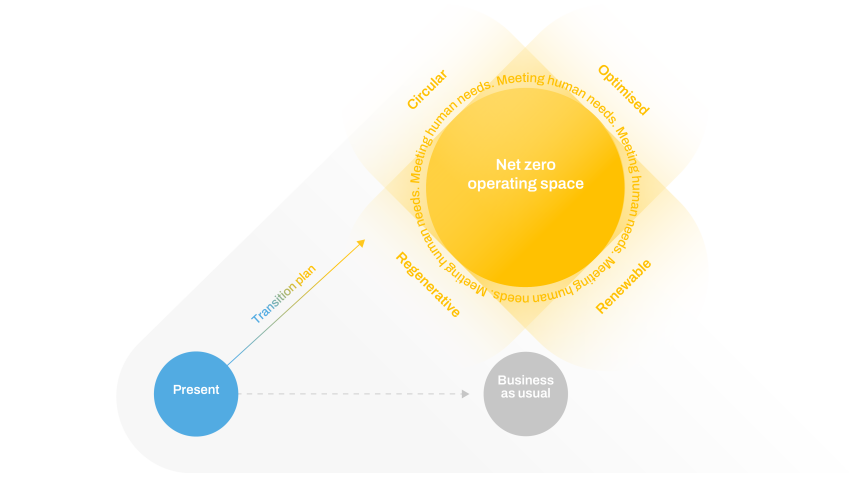Current projections indicate the planet could heat up by 2.7°C by the end of the century if no additional measures are taken. Every fraction of a degree beyond 1.5°C poses severe risks, including more extreme weather events like heavy rainfall, storms, heatwaves and droughts.
These climate-induced disruptions could significantly impact global GDP, with the world economy potentially facing a 19% income reduction within the next 26 years, regardless of future emissions choices. The more delayed and disorderly the transition is, the bigger the economic risk.
Chief executives in the real economy therefore have a business interest in radically reducing emissions to contribute to the global achieving of net zero emissions by 2050, limiting global warming as close as possible to 1.5°C.
But while pathways for limiting heating to 1.5°C provide clarity on the global sectoral transformations that are necessary, they do not give business a basis for planning.
In a new thought piece, the Exponential Roadmap Initiative outlines a vision for what the net zero operating space for businesses can look like.
The piece is inspired by Simon Stiell, Executive Secretary for the United Nations Framework Convention on Climate Change (UNFCCC), who asked his audience in a speech on 2 February to envision a future where global warming is contained at 1.5°C and communities are shielded from climate impacts.
I want us to start in 2050, imagining what the world will look like if we do succeed in both limiting global warming to 1.5°C and protecting all peoples from climate change impacts.
Similarly, Exponential Roadmap Initiative’s Claire Wigg and Evan Eskilson take as starting a point a net zero future, positing that such a world, allows only for products and services that serve human needs.
Transforming business for net zero
The piece spells out the human needs to be met and develops further the conditions under which business can operate to meet the needs.
These conditions are:
Circular: Transitioning from a linear “take-make-use-dispose” system to a circular economy that values minimal use of virgin materials, extends the lifespan of products and ensures materials are recycled or safely returned to nature.
Optimised: Eliminating waste in all forms, from manufacturing, food, energy and beyond. This involves ending planned obsolescence, optimizing design to reduce waste and shortening supply chains to save energy.
Regenerative: Ensuring that business activities contribute to the restoration and enhancement of ecosystems and communities. This includes sustainable land management and fostering strong relationships with local farmers and communities.
Renewable: Committing to renewable energy and materials, with a target of at least 95% of energy from renewable sources. Businesses must reconfigure supply chains and innovate products to support this transformation.

The piece further offers example for key performance indicators (KPIs) and goals that can help companies chart their transformation towards meeting the conditions of the net zero operating space.
